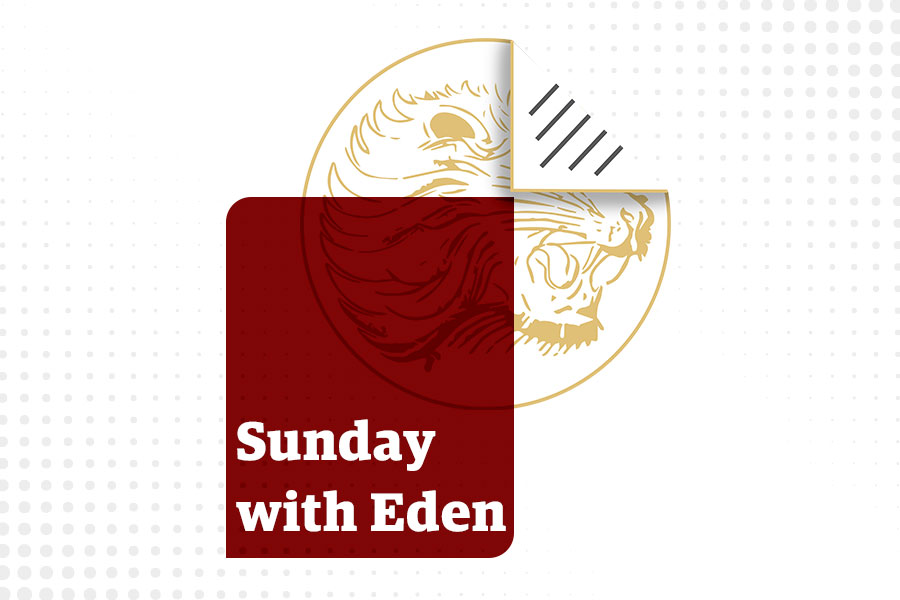
Commentaries | Sep 07,2019
Feb 8 , 2020
By Abraham Worku
Interbrand, a New York-based marketing consultancy, recently listed the top 100 global brands of 2019. Apple ranked first, with a brand value of 234.2 billion dollars. This is while the tech company’s total market value was 940 billion dollars.
Apple is one of the top technology companies, and it must consistently and continually innovate to build new products and features. It will otherwise be leapfrogged, as happened to Sony, which ranked 56th with a brand value of 10 billion dollars, and Nokia, which is now not even in the top 100 list.
One does not need to necessarily be in the technology industry to have such high brand value. Coca-Cola ranks fifth on the list with a brand value of 63.4 billion dollars, while its total market value stood at around a quarter of a trillion dollars.
The secret formula of the Coca-Cola syrup was invented over a century ago. Only in response to consumer problems - or to help its customers overcome barriers from drinking more - did it make a few tweaks to its original product and create the likes of Diet Coke. And yet, Coca-Cola has more brand value than Samsung, Facebook or Mercedes.
But why do brands have such a large value and are sometimes the most expensive assets in a company?
“If this company were to split up, I would give you the property, plant and equipment, and I would take the brands and the trademarks, and I would fare better than you,” famously said John Stuart, CEO of Quaker Oats from 1922 to 1956.
Can we say the same about many of the “brands” in Ethiopia? Are they brands or “brandr” (company name or product name)?
These, I think, are questions worth considering, especially now in Ethiopia, because “brands” and logos are proliferating unprecedentedly. Even the Ethiopian government talks of branding, especially in tourism, and the ongoing rebranding at the public institutions.
The word brand is derived from the Old Norse word brandr, which means “to burn,” as brands were and still are the means by which owners of livestock mark – or burn their names on the body of - their animals for identification. Thus, branding has been around for centuries as a means of distinguishing the goods of one producer from those of another.
The American Marketing Association (AMA) defines brands as a “name, term, sign, symbol or design or a combination of them, intended to identify the goods and services of one seller or group of sellers and to differentiate them from those of the competition.”
However, many marketing professionals and practitioners, including the ones in companies such as Apple and Coca-Cola, say that this is only a tiny part of what branding is as we understand it now.
Even then, since branding is a recent but fast-growing concept, different marketers offer different definitions for the word. Some focus on product or service quality and performance and only expand on the AMA definition. Others focus on the imagery, which is about consumers’ perception of the brand and the associations they form in their minds.
For instance, one definition says “a brand is a set of mental associations, held by the consumer, which adds to the perceived value of a product or service.”
Others combine the product and the perception elements and define brands as a promise companies make to consumers that their product or service satisfies functional and psychological needs.
Many brand strategists and marketers prefer the following definition, which captures both elements and more. A brand is a name that symbolises a long-term engagement or commitment to a unique set of values, embedded into products, services and behaviours, which make the organisation, person, service or product stand apart or stand out.
Branding starts with establishing a proper brand identity. Brand identity is a unique set of associations that the brand strategist aspires to create or maintain. These associations represent what the brand stands for, its vision and values, and imply a promise to customers from the organisation members, what makes it different and the needs the brand fulfills.
Brand identity should help establish a relationship between the brand and the customer by generating a value proposition involving various benefits. It is this rich brand identity that must serve as a basis for brand and logo design as the identity of the brand can be conveyed through the type and weight of fonts, colours, symbols and textures.
If brand identity stands for certain values and implies promises to customers, then there must be a business strategy, a process, a culture and people that stand behind these values and promises. Even better, the identity or some features of it must emanate from what the company believes are its sustainable competitive advantages.
For instance, innovation and marketing are the competitive advantages of Apple, while it is marketing and channel management for Coca-Cola. These latter identity features make the brand stand apart in the market. That is why marketers say that brands are not mere names and symbols; they have more symbolic meaning and value than products or product names.
Strong brands are very useful for customers as much as they are for companies, because such brands are risk and search cost reducers, a signal of quality and even are creators of psychological bonds with consumers.
Thus, no wonder that when consumers meet a new brand, they ask, “Who are you?” We all know that “brandring” or telling a name only cannot answer this question.
But how do we create an appropriate brand meaning? Brand meaning is made up of two significant categories of brand associations related to performance and imagery. A company must position its brand in the minds of its target customers through a well-crafted value proposition - outlining the benefits and using great associations or imagery.
Imagery is what customers associate a brand with. For instance, Apple’s customers form images about the brand that are associated with being creative, user-friendly, independent and cool. Coke’s customers associate the brand’s image with being fun, family-oriented, youthful, celebratory and sharing. This happens by design, not by chance. Rich brand identity, good marketing strategy and knowledge of consumer behaviour, especially of target customers, can help companies position themselves to maximum effect.
Companies also need to elicit the right brand response from customers and establish brand loyalty. Brands help customers express themselves, whether their actual or ideal self. Strong brands serve dual purpose. Through performance and imagery, they appeal to the rational and emotional needs of consumers.
Consistency with product performance and the marketing communication program are the most important tools for eliciting brand loyalty. Appropriate marketing communication aids brand awareness, high level of familiarity and association with a strong, favourable and unique brand in the memories of customers or consumers.
Wit and drama are poor substitutes for informative and believable ads. Consistency, authenticity, and effective communication can get us even love-marks, a marketing concept that focuses on emotional engagement and brand communities. The brand will then command repeat purchases, massive word-of-mouth advertising, many likes and shares on Facebook, premium prices and top talents. All of which are sources of differential incomes that accrue to the company as a result of having a stronger brand.
So, are “brands” in Ethiopia bonding companies with their customers and adding value? Or are they serving only as organisation or product name? What about companies’ marketing communication? Is it positioning them differently or above the competition? Or is it only telling the market that they, too, exist and are available for consideration like a commodity?
PUBLISHED ON
Feb 08,2020 [ VOL
20 , NO
1032]


Commentaries | Sep 07,2019

Sunday with Eden | May 18,2019

Obituary | Jan 07,2023

Viewpoints | Mar 21,2020

Verbatim | Oct 05,2024

Commentaries | Sep 17,2022

My Opinion | Jul 09,2022

Commentaries | Sep 04,2021

Life Matters | Dec 26,2020

View From Arada | Jun 12,2021

Photo Gallery | 176415 Views | May 06,2019

Photo Gallery | 166629 Views | Apr 26,2019

Photo Gallery | 157139 Views | Oct 06,2021

My Opinion | 136908 Views | Aug 14,2021

Dec 22 , 2024 . By TIZITA SHEWAFERAW
Charged with transforming colossal state-owned enterprises into modern and competitiv...

Aug 18 , 2024 . By AKSAH ITALO
Although predictable Yonas Zerihun's job in the ride-hailing service is not immune to...

Jul 28 , 2024 . By TIZITA SHEWAFERAW
Unhabitual, perhaps too many, Samuel Gebreyohannes, 38, used to occasionally enjoy a couple of beers at breakfast. However, he recently swit...

Jul 13 , 2024 . By AKSAH ITALO
Investors who rely on tractors, trucks, and field vehicles for commuting, transporting commodities, and f...

Oct 18 , 2025
The political establishment, notably the ruling party and its top brass, has become p...

Oct 11 , 2025
Ladislas Farago, a roving Associated Press (AP) correspondent, arrived in Ethiopia in...

Oct 4 , 2025
Eyob Tekalegn (PhD) had been in the Governor's chair for only weeks when, on Septembe...

Sep 27 , 2025
Four years into an experiment with “shock therapy” in education, the national moo...

Oct 18 , 2025 . By NAHOM AYELE
In a sweeping reform that upends nearly a decade of uniform health insurance contribu...

A bill that could transform the nutritional state sits in a limbo, even as the countr...

Oct 18 , 2025 . By SURAFEL MULUGETA
A long-planned directive to curb carbon emissions from fossil-fuel-powered vehicles h...

Oct 18 , 2025 . By BEZAWIT HULUAGER
Transaction advisors working with companies that hold over a quarter of a billion Bir...